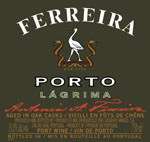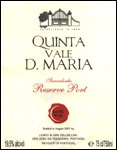![]()

Get
all the evaluations for
the July Release
Subscribe
to Vintage Assessments today
by Clicking
Here
This
not-for-profit website is dedicated to the discerning reader!
A Survivor’s Guide to White Port
And other Portuguese Sweeties
©
Michael Vaughan 2004
National Post
Weekly Wine & Spirits Columnist
Saturday,
June 26, 2004
www.winefind.ca
If there is a product that interests you, just click on the name below and you will instantaneously connected with the LCBO database. The product will appear in blue and all you have to do is click on the name again and then the next screen will provide details along with the store search. Just click on store search. The number of bottles in each store is updated nightly. You should call the store first to see if stock still remains (each store phone number is listed).
Last
week I was accused of having a sweet tooth. I guess it’s true to a
point, because while I am not a huge dessert fan, I relish a fine sweetie
after a meal. For the many who share my enthusiasm, and even the few who
don’t, today’s Vintages release has a fine selection and even a few
incredible “must buy” sweeties.
Let
me start off with a “might try”
- a somewhat rarefied white Port. What we have here is the
mandatory prepandial for anyone going to, you guessed it, Oporto. While
some may ague that “Port’s first duty is to be red”, it is evident
that white Ports are making a splash in some sophisticated destinations,
such as top Parisian restaurants.
To
begin with, a white Port is made in the same way as red, except that it is
produced with Douro white grape varieties - Gouveio
(aka Verdelho),
Viosinho
and Malvasia.
At one time the grapes were foot trodden in lagares and the juice was
fermented on the skins. Today, new styles are made using
temperature-controlled fermentation, which means a brighter, lighter
style. Before
all the sugar is converted into alcohol, pure grape spirit is added
halting the fermentation process thereby leaving some residual sweetness.
Final alcohol may vary from a low of 16.5% (referred to as a “Light
Dry’) to about 20%. The sweetness can vary considerably from very
sweet called “Lagrima” all the way down to an extra dry. It
is then aged in oak barrels, usually for two years.
 Eleven
white Ports having graced the Vintages shelves over the past four years.
My favourite of the two appearing this month is Ferreira
Lágrima (980136 $14.95) a flavourful
effort has a significant amount of residual sugar (14%) and is blended
from two to five year old barrels (the average age is three years).
Medium-deep gold in colour, it has a very sweet, spicy, caramel
nose with some refreshing lemon-quince notes. You will find it somewhat
sweet, fairly full bodied and nutty with lingering ripe lemon and
caramelised plum flavours. Try it well chilled or on the rocks as an
aperitif with a twist of lemon or tangerine. It can also be served after
dinner with ripe cheese.
Eleven
white Ports having graced the Vintages shelves over the past four years.
My favourite of the two appearing this month is Ferreira
Lágrima (980136 $14.95) a flavourful
effort has a significant amount of residual sugar (14%) and is blended
from two to five year old barrels (the average age is three years).
Medium-deep gold in colour, it has a very sweet, spicy, caramel
nose with some refreshing lemon-quince notes. You will find it somewhat
sweet, fairly full bodied and nutty with lingering ripe lemon and
caramelised plum flavours. Try it well chilled or on the rocks as an
aperitif with a twist of lemon or tangerine. It can also be served after
dinner with ripe cheese.
Next
on today’s hit parade is another Portuguese “dessert” wine, which
could also be passed of as an aperitif. From south east of Lisbon comes
the fabled Moscatel de Setübal, which made from the Muscat
of Alexandria grape. It has been produced in this area since
Roman times in a manner similar to Port.
 There
are several styles, and while they all are sweet, J.P.
Vinhos Moscatel de Setubal
(996181 $11.95) with 17.3% alcohol, it isn’t as sweet or powerful as
Ferreira. Nor is it as rich as some of the stunning, pricey, old reserve
Setubal from Jose
Maria da Fonseca. Nevertheless, this amber orange coloured
sipper has a certain charm with its gently sweet, honeyed, quince nose. On
the palate, it is honeyed and only gently sweet with very tangy, tangerine
marmalade flavours with a surprisingly refreshing finish. A winner as an
aperitif on the rocks with a twist of lemon, the release scheduled for
earlier this month has been delayed and it should appear any day now.
There
are several styles, and while they all are sweet, J.P.
Vinhos Moscatel de Setubal
(996181 $11.95) with 17.3% alcohol, it isn’t as sweet or powerful as
Ferreira. Nor is it as rich as some of the stunning, pricey, old reserve
Setubal from Jose
Maria da Fonseca. Nevertheless, this amber orange coloured
sipper has a certain charm with its gently sweet, honeyed, quince nose. On
the palate, it is honeyed and only gently sweet with very tangy, tangerine
marmalade flavours with a surprisingly refreshing finish. A winner as an
aperitif on the rocks with a twist of lemon, the release scheduled for
earlier this month has been delayed and it should appear any day now.
 The
remaining three wines are all fantastic. The least expensive is the
unfined/unfiltered Quinta
do Vale Dona Maria Reserve Port Lot No 1
The
remaining three wines are all fantastic. The least expensive is the
unfined/unfiltered Quinta
do Vale Dona Maria Reserve Port Lot No 1
 (994657 $23.95). This single vineyard (quinta) Port has a very deep
intense purple colour and a spicy, plummy, juicy ripe black cherry nose.
On the palate it is medium-full bodied, tangy and yet fairly creamy with
spicy, ripe Damson plum and sandalwood flavours. Although the
“Reserve” designation has no legal meaning, it is owner Cristiano
van Zeller’s personal reserve. This extraordinary value was
foot trodden in old granite stone lagares and aged in old wooden vats. It
leans in the Vintage Port direction and represents an outstanding buy
meaning it may be laid away for another decade.
(994657 $23.95). This single vineyard (quinta) Port has a very deep
intense purple colour and a spicy, plummy, juicy ripe black cherry nose.
On the palate it is medium-full bodied, tangy and yet fairly creamy with
spicy, ripe Damson plum and sandalwood flavours. Although the
“Reserve” designation has no legal meaning, it is owner Cristiano
van Zeller’s personal reserve. This extraordinary value was
foot trodden in old granite stone lagares and aged in old wooden vats. It
leans in the Vintage Port direction and represents an outstanding buy
meaning it may be laid away for another decade.
Last
but not least is a pair of delicious, ready-to-enjoy, Madeira dessert
wines. This first, a bit more expensive at $54.95, is Henriques
& Henriques 15-Year-Old Verdelho Madeira
(553701 $54.95), which is made from the same Verdelho
grape used to make white Port. This extremely tasty Vintages Instore
Discovery is amber in colour with sweet, burnt caramel, nuts and honey on
the nose along with some citrusy, Cointreau notes. Only modestly sweet,
the fine, lingering, tangy, citrus-caramel flavours go on and on. A
perfect after-dinner sipper.
 If
you want something more modest, don’t miss today’s release best buy Henriques
& Henriques 10-Year-Old Sercial Madeira
(948810 $37.95).
The Sercial
grape is also known as Esgana Cao or “dog strangler” and generally produces less sweet
wines with great finesse. This well-aged effort has a golden amber colour
and a wonderful, sweet, complex, vanilla-tinged, crème brûlée nose. On
the palate it is intense and fairly sweet but balanced with rich, candied
tangerine, biscotti and crème brûlée flavours. It is certainly one of
the best 10-year-old efforts tasted and a definitive EURO CUP 2004 winner.
If
you want something more modest, don’t miss today’s release best buy Henriques
& Henriques 10-Year-Old Sercial Madeira
(948810 $37.95).
The Sercial
grape is also known as Esgana Cao or “dog strangler” and generally produces less sweet
wines with great finesse. This well-aged effort has a golden amber colour
and a wonderful, sweet, complex, vanilla-tinged, crème brûlée nose. On
the palate it is intense and fairly sweet but balanced with rich, candied
tangerine, biscotti and crème brûlée flavours. It is certainly one of
the best 10-year-old efforts tasted and a definitive EURO CUP 2004 winner.2001-2002-2003-2004
Tasting Note Database
Our
tasting note database from December 31, 2000 to June 2004, covers every
Vintages release product for the past 42 months. There are more than 7,000 notes in the database data. Just enter the name of the product,
supplier name or CSPC number. Or you can search by type of wine, country
of origin, even wine agent! Nothing could be easier. Also you can get information on the agent by clicking on the
agent’s name, as well as current LCBO store inventory by clicking on
"Check
LCBO Availability", which will automatically tell you the
number of bottles at LCBO as of last night.
To use our winefind.ca Tasting Notes Database: click here
Subscribe
to Vintage Assessments Today
• Click
Here
To
see a sample of our monthly newsletter: click
here
|
** For All Visitors ** |
Copyright Food & Beverage Testing Institute of Canada
2004
Prior written permission is required for any form of reproduction
(electronic or other wise) and or quotation.
Contact Michael Vaughan at
mbv@total.net